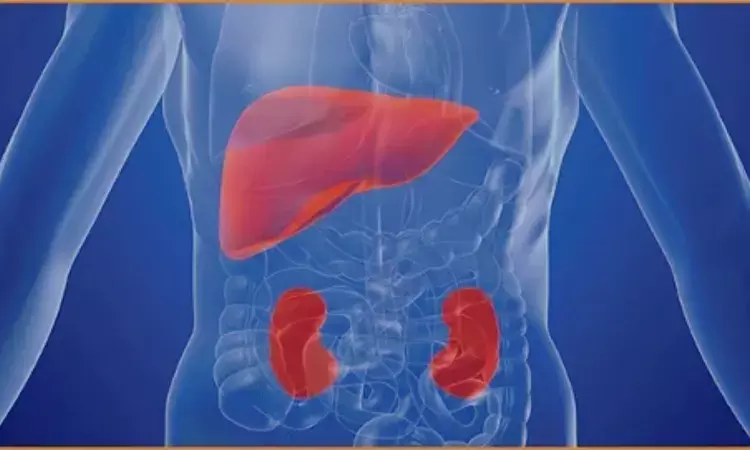- Home
- Medical news & Guidelines
- Anesthesiology
- Cardiology and CTVS
- Critical Care
- Dentistry
- Dermatology
- Diabetes and Endocrinology
- ENT
- Gastroenterology
- Medicine
- Nephrology
- Neurology
- Obstretics-Gynaecology
- Oncology
- Ophthalmology
- Orthopaedics
- Pediatrics-Neonatology
- Psychiatry
- Pulmonology
- Radiology
- Surgery
- Urology
- Laboratory Medicine
- Diet
- Nursing
- Paramedical
- Physiotherapy
- Health news
- Fact Check
- Bone Health Fact Check
- Brain Health Fact Check
- Cancer Related Fact Check
- Child Care Fact Check
- Dental and oral health fact check
- Diabetes and metabolic health fact check
- Diet and Nutrition Fact Check
- Eye and ENT Care Fact Check
- Fitness fact check
- Gut health fact check
- Heart health fact check
- Kidney health fact check
- Medical education fact check
- Men's health fact check
- Respiratory fact check
- Skin and hair care fact check
- Vaccine and Immunization fact check
- Women's health fact check
- AYUSH
- State News
- Andaman and Nicobar Islands
- Andhra Pradesh
- Arunachal Pradesh
- Assam
- Bihar
- Chandigarh
- Chattisgarh
- Dadra and Nagar Haveli
- Daman and Diu
- Delhi
- Goa
- Gujarat
- Haryana
- Himachal Pradesh
- Jammu & Kashmir
- Jharkhand
- Karnataka
- Kerala
- Ladakh
- Lakshadweep
- Madhya Pradesh
- Maharashtra
- Manipur
- Meghalaya
- Mizoram
- Nagaland
- Odisha
- Puducherry
- Punjab
- Rajasthan
- Sikkim
- Tamil Nadu
- Telangana
- Tripura
- Uttar Pradesh
- Uttrakhand
- West Bengal
- Medical Education
- Industry
LDH Levels Identified as Potential Biomarker for Metabolic Syndrome and Liver Disease Severity

A new retrospective study found a significant association between lactate dehydrogenase (LDH) levels and the severity of metabolic syndrome (MetS) and Metabolic Associated Fatty Liver Disease (MAFLD). The findings published in the Diabetes, Metabolic Syndrome and Obesity journal suggest that LDH may serve as a promising biomarker for assessing the risk of metabolic-associated steatohepatitis (MASH).
The study from the Second Affiliated Hospital of Anhui Medical University was conducted from January 2018 to December 2021. This study involved a total of 855 obese patients who underwent evaluation in the bariatric surgery department. This research assessed the presence of MAFLD using histological liver biopsy results, pathology slides, and hematological markers. LDH levels were measured in the study participants to explore their correlation with metabolic syndrome and liver disease severity.
The key findings revealed that patients with metabolic syndrome had significantly higher LDH levels (averaging 214.1 units per liter) when compared to the patients without MetS (188.7 units per liter). LDH concentrations were notably elevated among patients presenting with individual MetS components such as hypertension, central obesity, high blood sugar levels, and elevated triglycerides.
The analysis indicated a positive correlation between the total number of MetS components and LDH levels. As the number of metabolic risk factors increased, so did LDH concentrations. The patients diagnosed with MASH expressed substantially higher LDH levels when compared to individuals with less severe liver conditions, such as simple fatty liver or borderline MASH.
Logistic regression analyses confirmed the independent relationship between LDH levels and multiple indicators of metabolic and liver disease severity. This included associations with advanced fibrosis stages (grade 1 through grade 3) and at-risk MASH cases.
The study highlighted that LDH levels could act as a valuable clinical predictor for both the presence and severity of metabolic disorders and liver disease. The research emphasized the importance of early identification of high-risk patients using LDH measurements to prevent the progression of metabolic and liver complications.
Overall, the study adds to the growing evidence supporting the use of novel biomarkers in disease assessment. This research underlined the role of LDH as a cost-effective and widely accessible biomarker. Routine monitoring of LDH levels could enhance the early diagnosis and management of metabolic and liver diseases.
Reference:
Yu, L., Bao, S., Zhu, F., Xu, Y., Zu, F., Liu, Y., Jiang, R., Chen, S., & Chen, W. (2025). Serum lactate dehydrogenase is a novel predictor for the severity in the patients with MAFLD: A cross-sectional study in Hefei, China. Diabetes, Metabolic Syndrome and Obesity: Targets and Therapy, 18, 345–361. https://doi.org/10.2147/dmso.s492153
Neuroscience Masters graduate
Jacinthlyn Sylvia, a Neuroscience Master's graduate from Chennai has worked extensively in deciphering the neurobiology of cognition and motor control in aging. She also has spread-out exposure to Neurosurgery from her Bachelor’s. She is currently involved in active Neuro-Oncology research. She is an upcoming neuroscientist with a fiery passion for writing. Her news cover at Medical Dialogues feature recent discoveries and updates from the healthcare and biomedical research fields. She can be reached at editorial@medicaldialogues.in
Dr Kamal Kant Kohli-MBBS, DTCD- a chest specialist with more than 30 years of practice and a flair for writing clinical articles, Dr Kamal Kant Kohli joined Medical Dialogues as a Chief Editor of Medical News. Besides writing articles, as an editor, he proofreads and verifies all the medical content published on Medical Dialogues including those coming from journals, studies,medical conferences,guidelines etc. Email: drkohli@medicaldialogues.in. Contact no. 011-43720751


